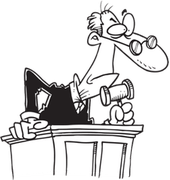
It's the melody and lyrics that can have a Copyright , NOT the chords or even the title of the song.
As such, I'll make every effort possible to only show the lyrics or melody to songs that I have permission for or that are in the Public Domain . I'll provide to sites that have the lyrics and let them fight it out with the lawyers.
All Material Related to Songs on this site is intended for Education Purposes Only
A published arrangement to a song, even a Public Domain song can have a copyright.
Here are a few resources regarding copyrights:
An original copyright holder have exclusive rights for 95 years. Then a songs goes into the public domain.
Songwriters also hold the mechanical rights to the song, which means that a write can collect royalties for recorded versions of their song.
Public performances of a copyrighted song also require a license to ensure that the copyright holder is compensated. Typically the venue obtains a license to have copyrighted songs performed. This the ASCAP, BMI, etc. organization that collect and distribute the fess to the publishing companies and songwriters.
- The U.S. Copyright Office: What Musicians Should Know about Copyright — Copyright Registration of Musical Compositions and Sound Recordings
- The Electronic Frontier Foundation: Teaching Copyright
- Copyright Resource Guide • From the Music Publishers Association of the United States
Fair use is a legal doctrine that promotes freedom of expression by permitting the unlicensed use of copyright-protected works in certain circumstances. Section 107 of the Copyright Act provides the statutory framework for determining whether something is a fair use and identifies certain types of uses—such as criticism, comment, news reporting, teaching, scholarship, and research—as examples of activities that may qualify as fair use. Section 107 calls for consideration of the following four factors in evaluating a question of fair use:
Purpose and character of the use, including whether the use is of a commercial nature or is for nonprofit educational purposes
- Nature of the copyrighted work
- Amount and substantiality of the portion used in relation to the copyrighted work as a whole
- Effect of the use upon the potential market for or value of the copyrighted work
Courts evaluate fair use claims on a case-bycase basis, and the outcome of any given case depends on a fact-specific inquiry. This means that there is no formula to ensure that a predetermined percentage or amount of a work—or specific number of words, lines, pages, copies—may be used without permission.
(from U.S. Copyright Office Fair Use Index web page: www.copyright.gov/fair-use/)



.jpg)